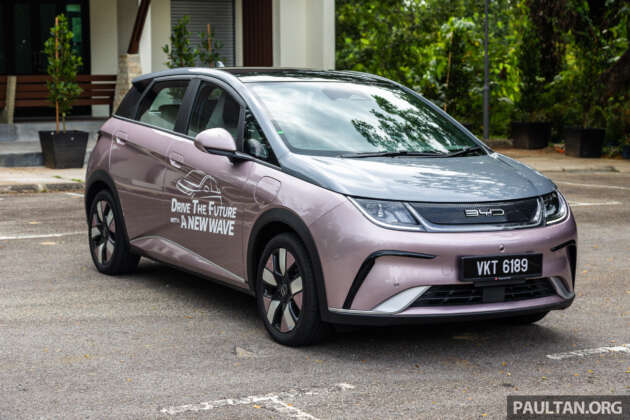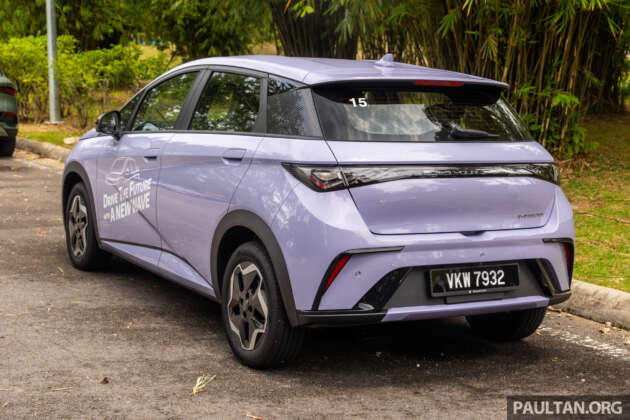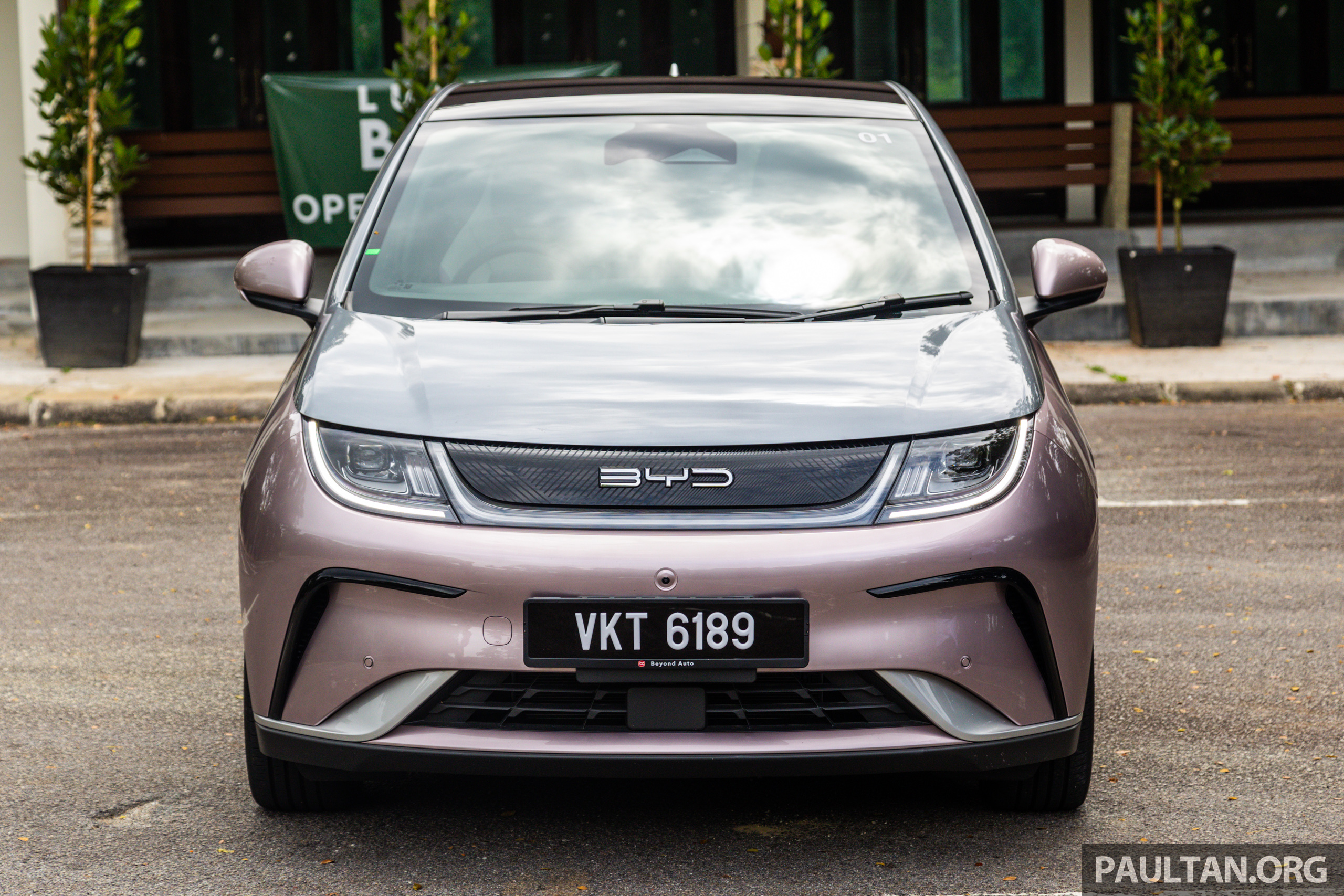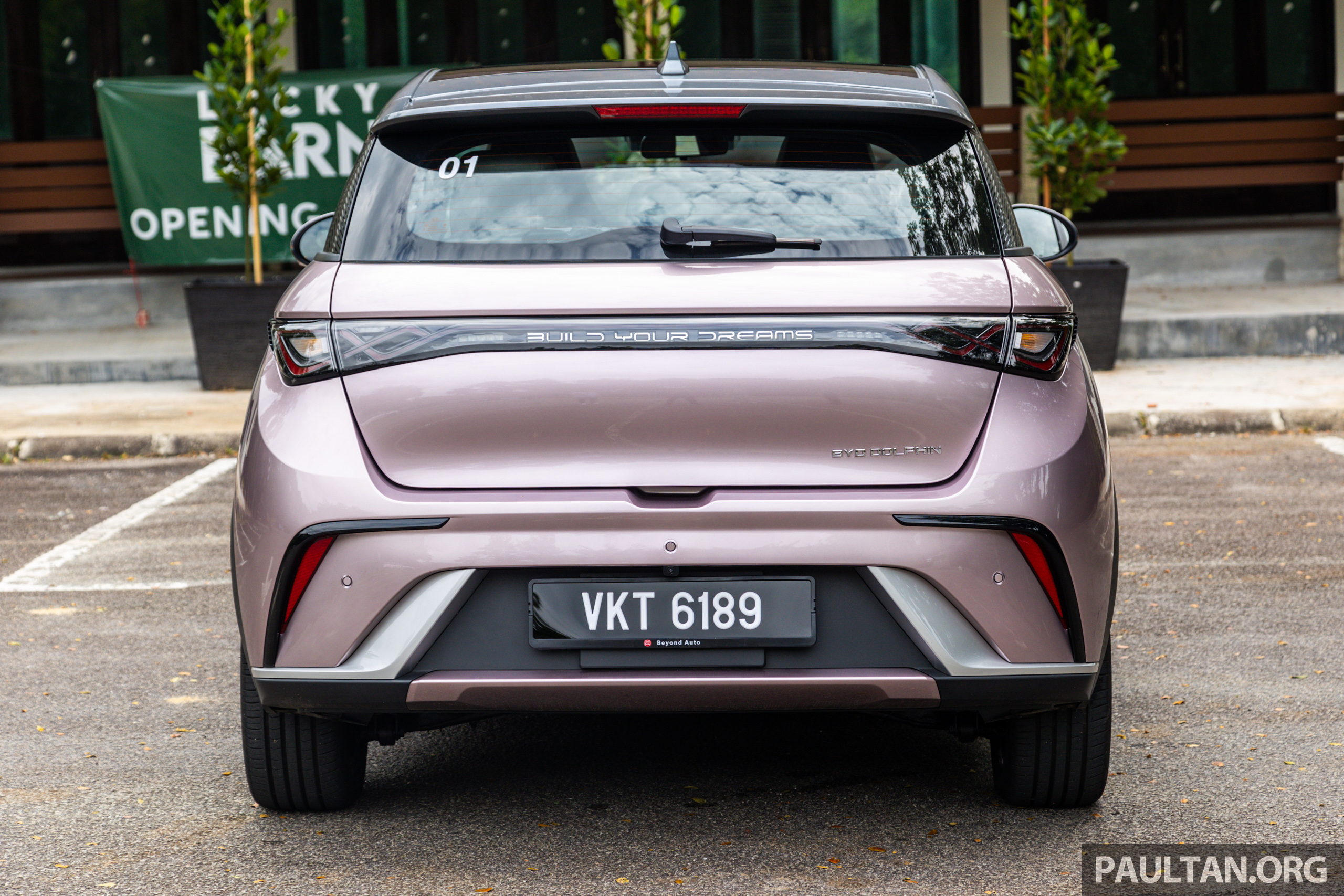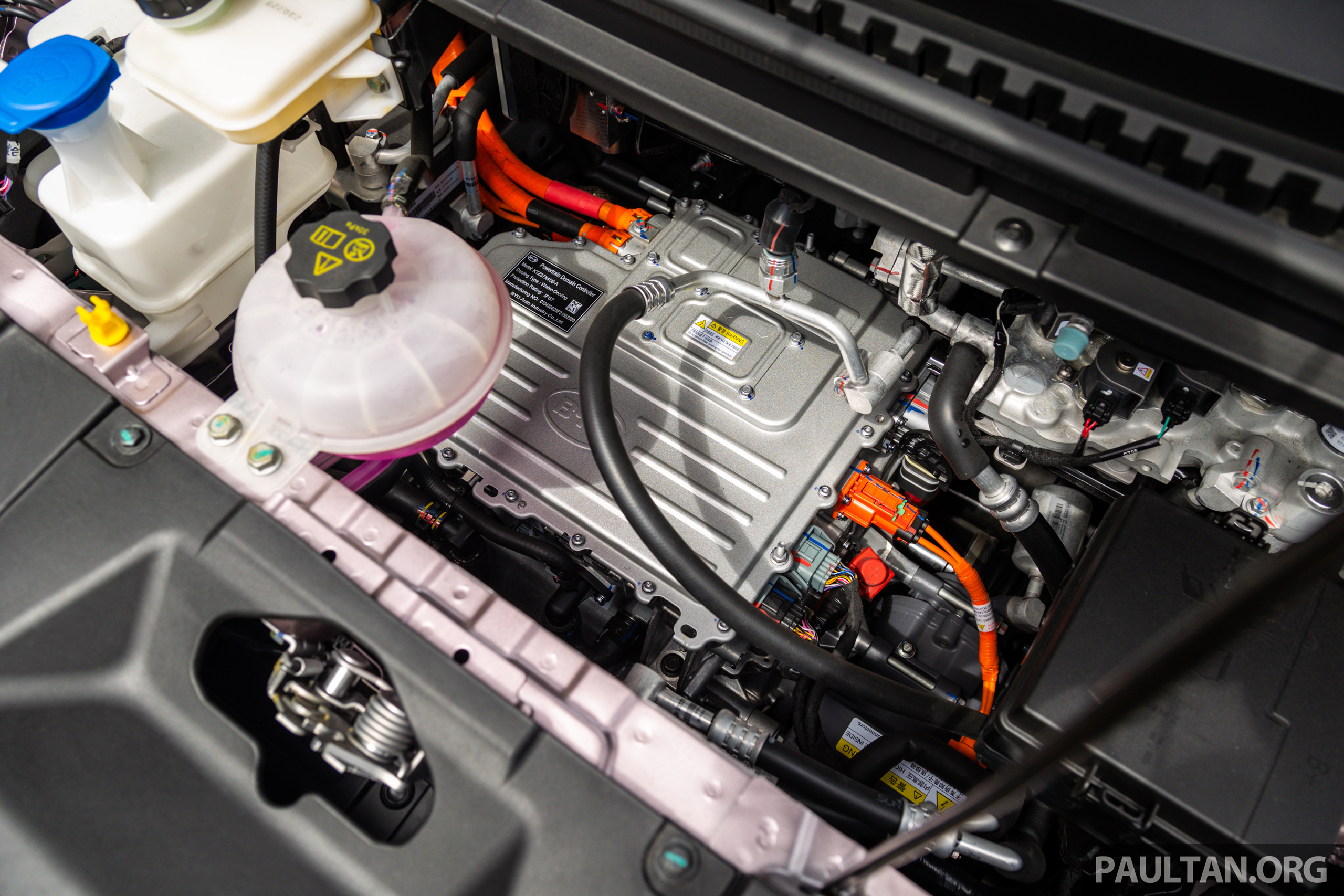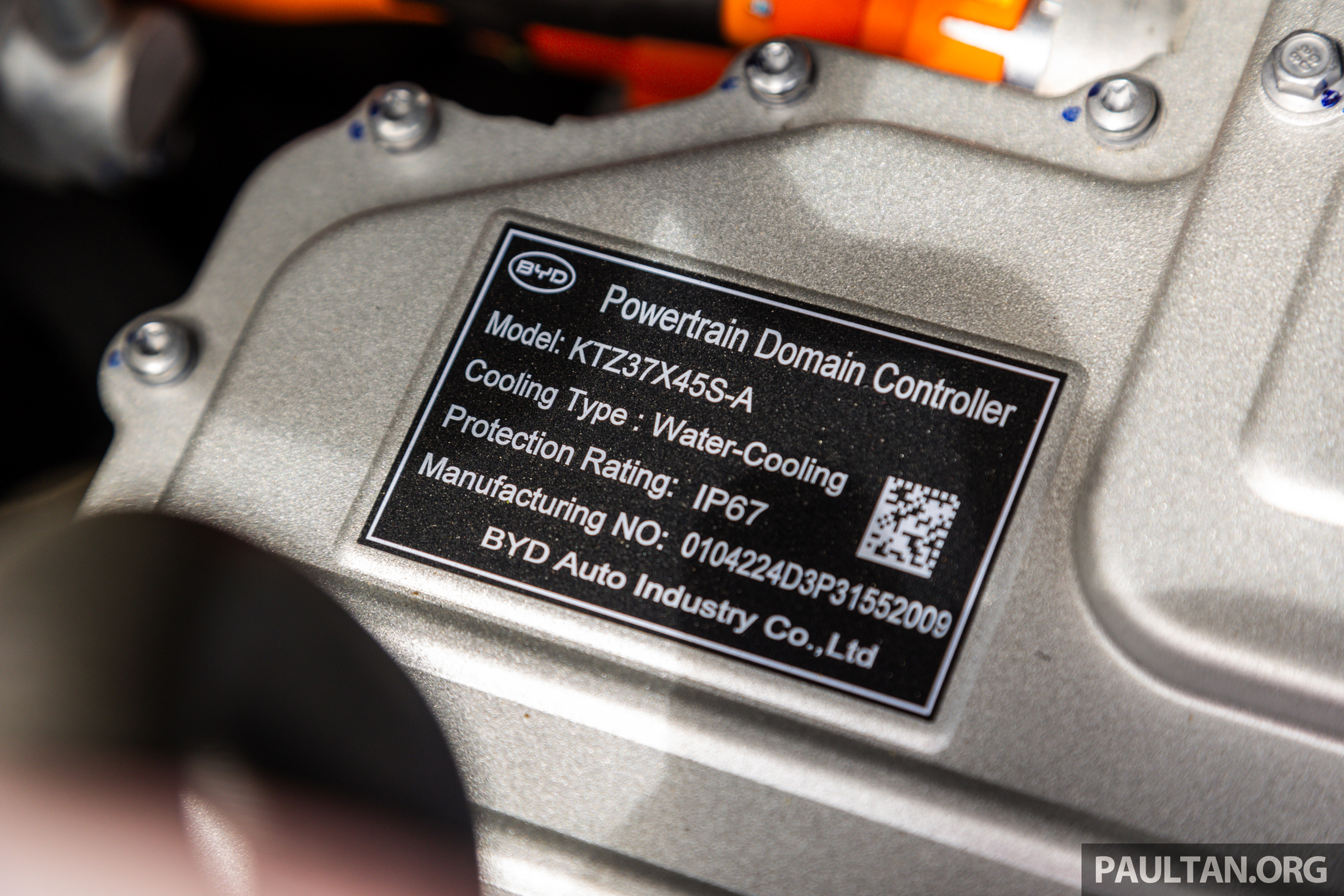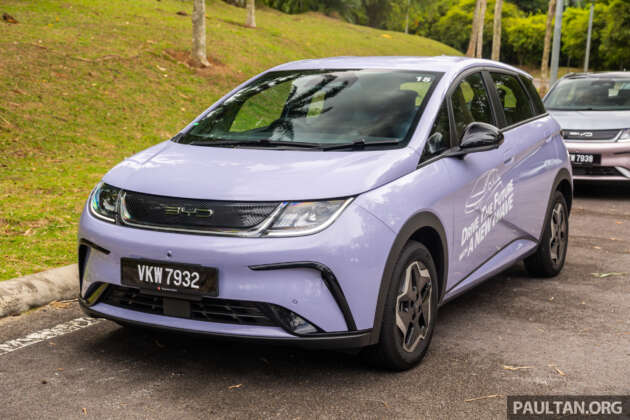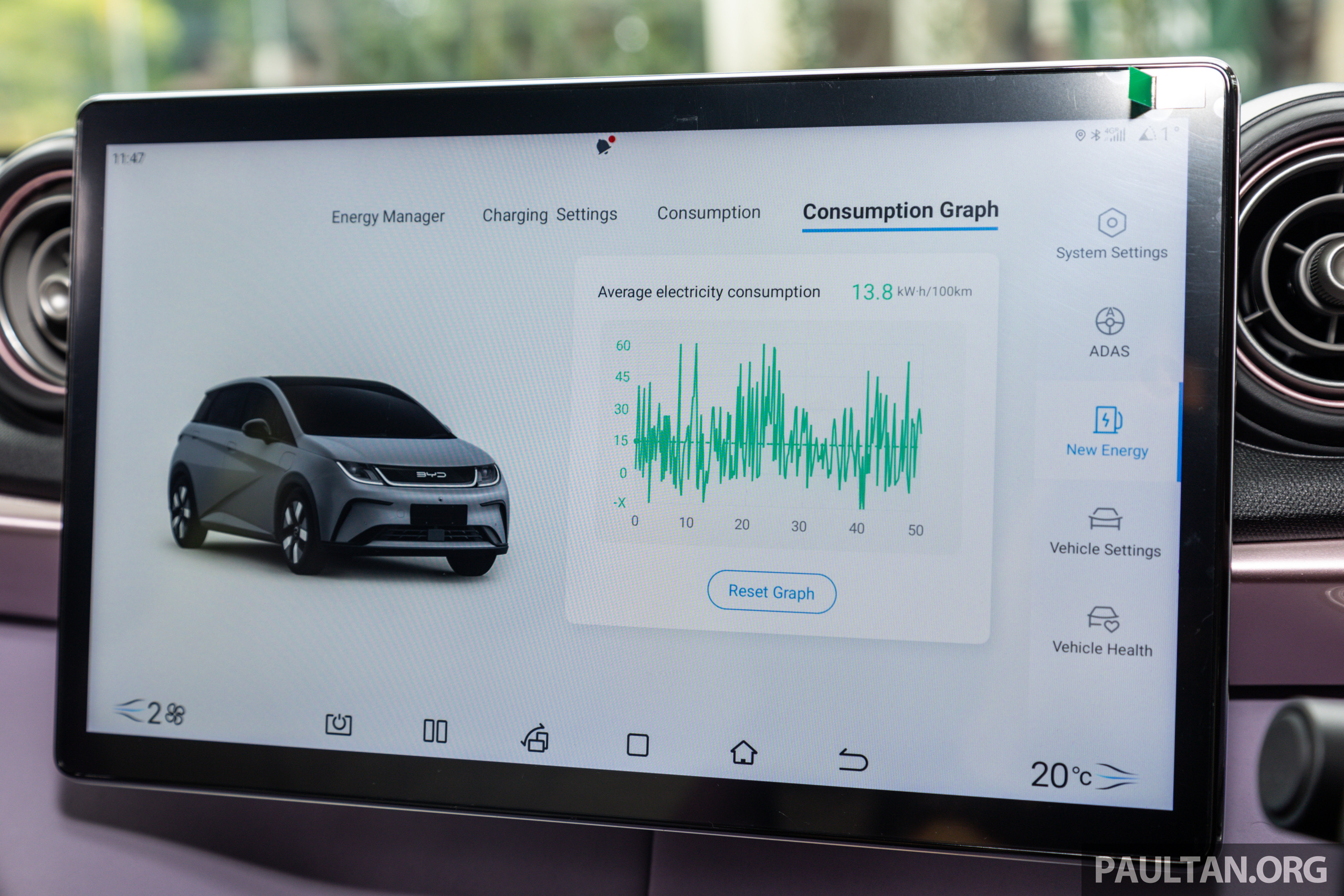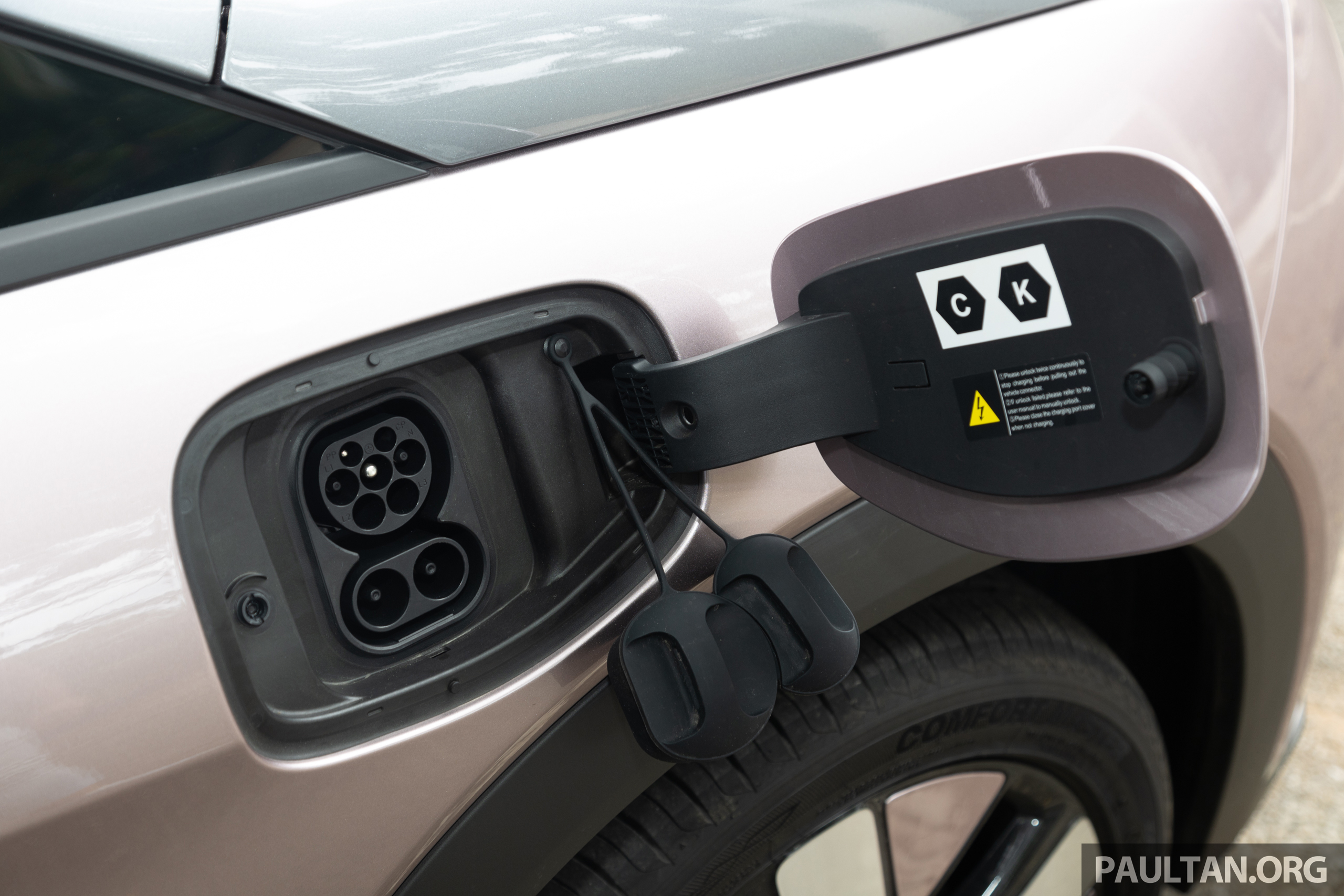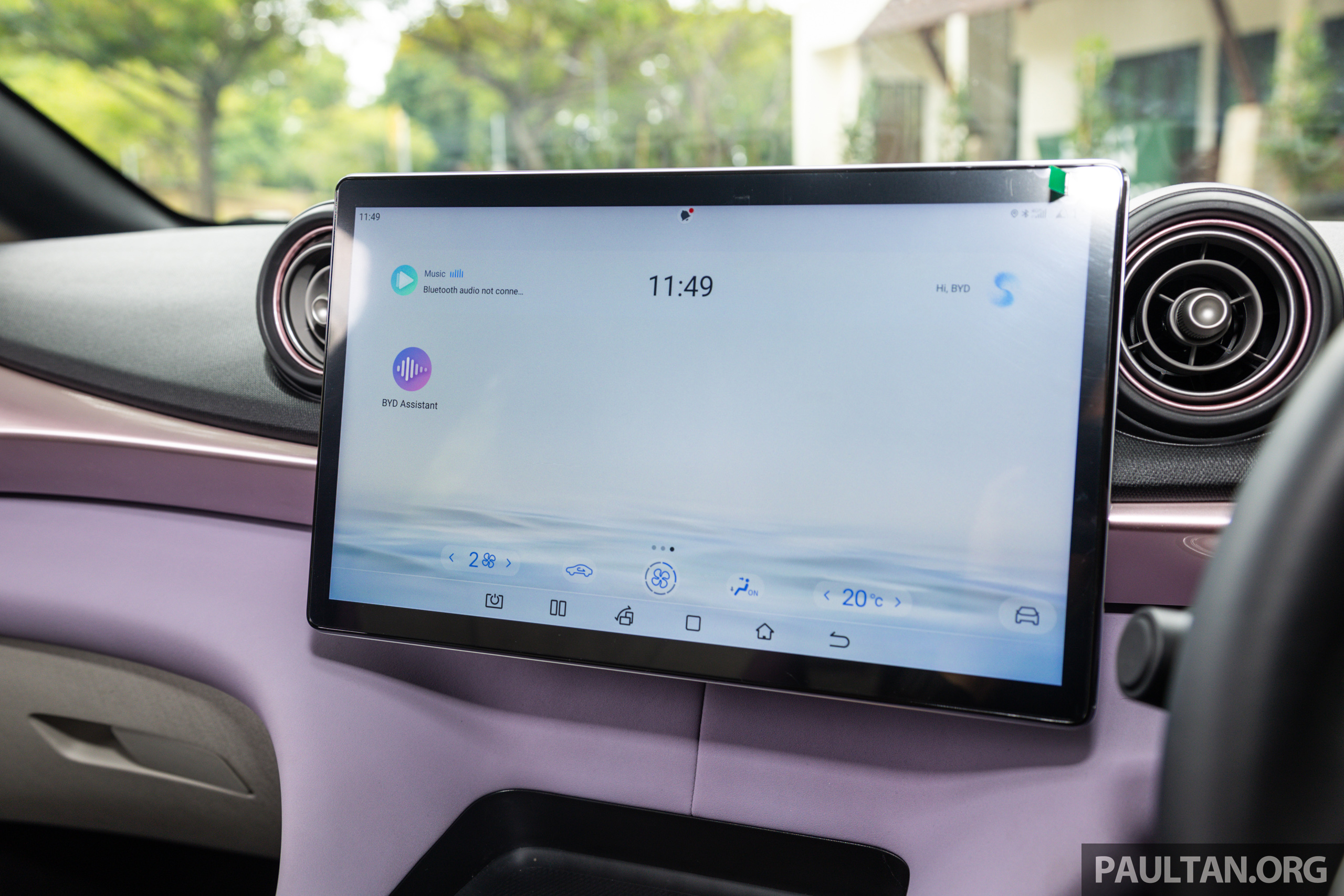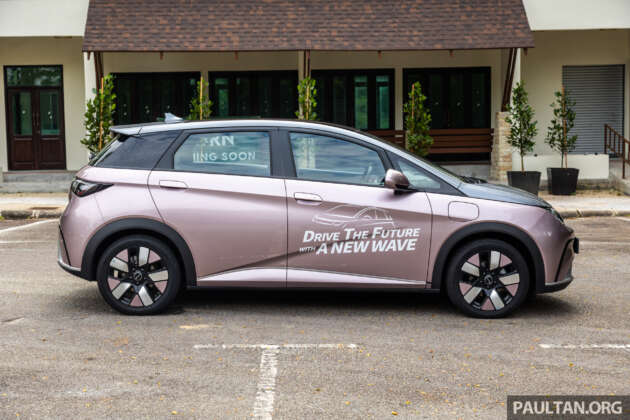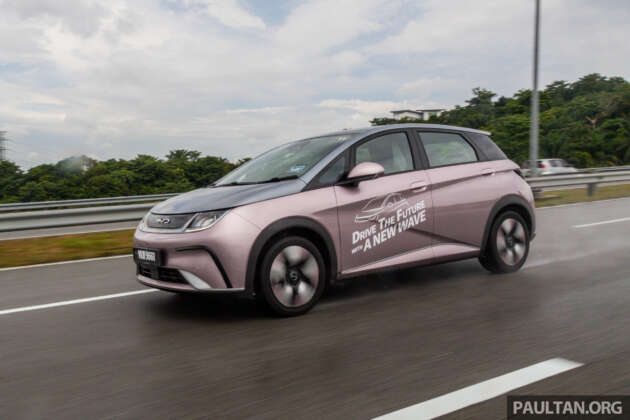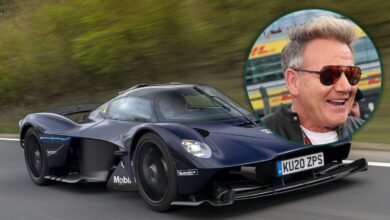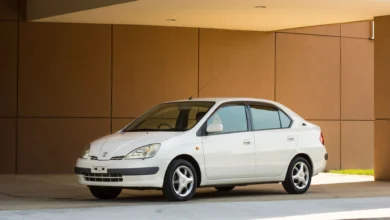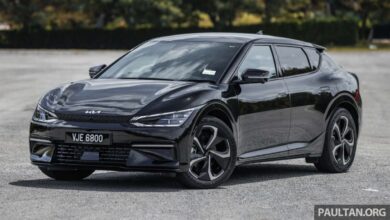2023 BYD Dolphin Malaysian review – a great value EV
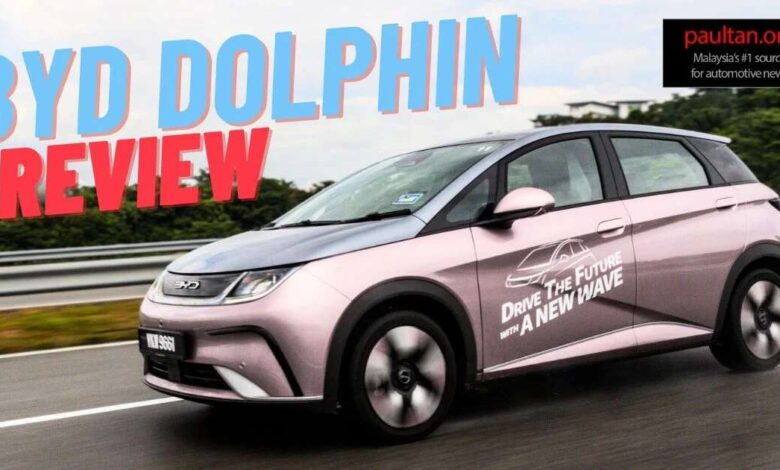
While the pace has undoubtedly picked up for electrification in the country, things are still inevitably centred around pricier offerings, so much so that one of the lines you’re bound to hear in discussions about the topic is “if electric vehicles were cheaper, I’d consider getting one.” Okay, that and fears about charging and its infrastructure.
Despite the understandable reticence about electrification, it’s safe to say that there’s a decent crowd ready to embrace the future, in more recent times from the swell of folk rushing for a Tesla. Of course, attractive as the pricing of the latter may be, that’s not quite cheap territory, not to many at least, and so the real litmus test at present is how people will take to an offering at half the price.
Yes, lament that things could, and should, be cheaper, but it is what it is for now, and it has to start somewhere. Though real movement will come when things head well under the century mark in the future, a couple of carmakers have put an early boot in to see if intent matches the desire, or is merely talk.
One of these is BYD, which launched its follow-up act to the Atto 3 back in July. The BYD Dolphin is available in two variants, a Premium Extended Range that goes for RM124,900 (RM125,530 on-the-road without insurance) and a Dynamic Standard Range carrying a recommended retail price of RM99,900. Add in on-the-road fees and it’s RM100,530.
The pricing, especially with the base variant, makes the Dolphin within reach to a wider audience, but how does it stack up? Here are our initial observations on the electric hatchback, gleaned from a short drive organised recently by Sime Darby Beyond Auto.
A quick recap of the two variants and their specifications. The exterior isn’t exceptionally striking, but the traditional approach is safe ground and ensures some longevity to the looks. A two-tone scheme for the Premium attempts to inject some vibrancy into things. Novel, for sure, but it’s a bit of an acquired taste.
The wheels differ, with the Standard riding on 16-inch units (with 195/60 profile tyres) and the Premium fitted with 17-inch alloy wheels (with 205/50 profile tyres). Aside from that, the rear suspension is also different, with the Premium utilising a multi-link setup, while the Standard has a torsion beam.
Away from the cosmetics, both Dolphin variants use a Blade lithium iron phosphate (LFP) battery, in different energy capacities. The Dynamic Standard Range, features a 44.92 kWh unit, which offers 410 km of NEDC-rated travel range (340 km WLTP). The Premium Extended Range, as its name suggests, has a larger capacity 60.48 kWh unit, and this is good enough for an operating range of 490 km on an NEDC cycle (427 km WLTP).
In the real world, deducting anywhere between 10-20% off these offer a more realistic take, depending on conditions and your driving input. With city use and short commutes, it’s well workable for most, aided by the fact that SD Beyond Auto confirmed that the majority of buyers of the car here so far have been those with landed properties and are not utilising it as a primary vehicle.
The former means that most are likely to install a charger, and a not very expensive one at that, because both variants sold here carry the same onboard AC charger (Type 2) that supports a maximum input of 7 kW. As for DC fast charging (CCS2), the Dynamic Standard can handle up to 60 kW, while the Extended Range can handle up to 80 kW, so on average, half hour charging times on suitable networks can be expected, by and large.
Both variants are equipped with a single electric motor, driving the front wheels. The Standard Range has 95 PS (94 hp or 70 kW) and 180 Nm in the way of output, good enough for a 0-100 km/h sprint time of 12.3 seconds. The Extended Range bumps things up to 204 PS (201 hp or 150 kW) and 310 Nm of torque, and this makes it a whole lot faster in the same sprint, taking seven seconds to achieve the same feat.
The difference in output is only felt when you’re gunning the Dolphin, which really isn’t what the car is about. Even then, up to intermediate speeds, the Standard Range has good pep, only running out of puff as you push hard past 80 into the century mark. If power is everything, then the ER is surely the way to go for you.
Approached as a city car, which by that token means running at low to intermediate speeds most of the time, both Dolphins work as advertised, very much a smooth and fuss-free tool. There are however some differences in their ride perspective. The drive – which ran a return loop from Desa Park City to Putrajaya – offered both variants to be sampled back-to-back, and there were some noticeable differences.
In terms of of low speed comfort, the Extended Range – and its multi-link rear – has a better secondary ride, soaking up road imperfections very nicely. It is also quieter at speeds past 80 km/h, with readily perceived lower levels of tyre and wind noise.
However, the flip side to this is that its suspension, an ace at low speeds, becomes wallowy and less composed when pushed, with the Standard Range – and its torsion beam rear – decidedly more sure-footed at higher cruising speeds, it cleaner primary ride offsetting its firmer low speed projection. As for the steering, its response and speed is muted, very much in tune with the Dolphin’s city car brief.
Given the route was a direct point-to-point loop, there are no charging equations to report, but some notes about range and consumption, based on the Standard Range on the return journey. At start, the odometer read 111.2 km, with the car signalling that there was 259 km of range and 63% state of charge left.
By the time we rolled back into Desa Park City, the readouts listed 178 km on the odo, with 161 km range and 39% SoC left, the system stating that the car had used up 98 km of available range and depleted 24% of the battery for the 66.8 km travelled.
Granted, there was quite a bit of pedal pushing at points, and so it isn’t going to be reflective of what most owners are going to get, but it shows that 300 km should be well achievable on the Standard with a lighter foot, based on SoC readings.
I didn’t note the same for the Premium, but the car’s consumption graph recorded a 13.8 kWh/100 km average on the outbound run. That’s really not too bad, considering that bigger EVs that are on the market have been known to consume around 17-20 kWh/100 km, showing the virtue of being smaller and lighter
If the exterior is conservative, then the same cannot be said of the interior. Fetching or too rad for your tastes will depend how you like your cabins styled, but there’s no in between. Colour contrasts and swoops aside, trim and material choices are decidedly better than you’d expect, with more than a fair bit of soft-touch elements.
Likewise the equipment levels, with automatic air-conditioning with a PM2.5 air filter, synthetic leather upholstery, a five-inch digital instrument cluster, wired Apple CarPlay support, navigation, six speakers and an electronic parking brake among the items in the mix.
You get more kit in the Premium, in the form of a panoramic glass roof, a wireless phone charger, powered front seats with ventilation function, rear LED reading lights and one-touch up-down for all windows, but even in its base form, the Dolphin is well equipped.
Nitpicks at a pinch? Well, the markings on the switchgear buttons on the centre console – under the 12.8-inch rotating infotainment system touchscreen – look like they might not hold up over the long haul. As for the screen itself, landscape looks easier on the eye than with portrait, and while there was little time to poke around the interface beyond a few taps on the drive, I get the feeling that it may not be so intuitive in certain areas.
Also, take note if you like shuffling the orientation of the screen – there’s a small storage area at the base, and the advice is not to put anything that is higher than what the screen unit can clear as it moves towards portrait. If it gets stuck, the screen won’t return to landscape despite pressing the activation button, and you’ll have to extract the item (gingerly, if it happens to be a mobile phone) to get things back to normal.
The sole occupant per car road test meant there was no way to try out the rear seats and how they shaped up on the move, but there’s certainly plenty of space at the back, and the bench looks proper for short city commutes. Plus points for the front seats, which are comfortable and contoured well.
Safety-wise, both variants are equipped with six airbags (front, side and curtain), a tyre pressure monitoring system, the usual array of passive systems (ABS, ESC, traction control, EBD), parking sensors (two front, three rear), 360-degree camera and door open warning.
A quick note about the ADAS kit. It’s certainly loaded on, with items ranging from autonomous emergency braking, adaptive cruise control, lane departure warning, lane keeping support to lane departure prevention as well as emergency lane keeping assist, among others.
Of these, the emergency lane keeping assist stood out, and not in a good way, aggressive in how it addressed what it felt to be untoward deviations in steering input. The pull back on the steering is strong, and it takes some getting used to.
Aside from this and a few other shortcomings, there’s plenty to like about the Dolphin, especially in how it performs. Its movement in urban surroundings is pleasant, it’s well specced and that interior is, for want of a better word, creative in its packaging. At the price, it’s an ideal first step for those looking to make the leap into electrification without having to spend big bucks on it.
FOOTNOTE: Someone posed a hypothetical question if I would sell my Perodua Ativa, which is just turning one this month, to switch to the Dolphin, citing the potential cost savings down the road in going electric, and so I decided to put down my thoughts on it. I guess it would work if the car I had was older and needing replacement, but that isn’t even half of why switching to electric isn’t it for me, not at this juncture, and it has nothing to do with not being kind to the environment or resisting technology.
Context is necessary as to why not. For one, there’s the thing about added cost of the purchase. If I were to sell off the Ativa, I’d be looking at putting about RM35k at the very least into a Dolphin Standard Range. Ah, but you’d save on fuel and make it back through the lifetime of the car, I hear voices saying.
Sure, if you drive a lot, and by that I mean your national average mileage, perhaps. At present, I do about 400 km+ tops. A month, not a week, most times usually less (and please, don’t ask why I have two cars). A full tank on the Ativa usually gets me around 430 to 450 km of movement, and a fill-up RM60-62 (or 30 litres). That’s the average spend per month, for the most.
The Dolphin’s Standard Range battery energy capacity is 44.92 kWh, and if you were to accept its claimed 340 km WLTP range as absolutely truth, it works out to about 7.5 km per kWh. To get the additional 90 km, another 12 kWh or so needs to be added on, making for 56 kWh of charging. Let’s say 52 kWh is needed to attain the same mileage, and charging at home with the highest tier 0.571 sen tariff would make the monthly spend RM30.
Working on the adage that a penny saved is a penny earned, RM30-35 a month of reduced cost sounds quite good, but the time needed to make up that outlay from the vehicle purchase would literally be a lifetime (1,000 months, if anyone’s counting). I won’t be around by then, and I don’t think the car would be too.
Even if you factor servicing costs for the ICE (let’s just take a higher RM1,000 a year for the two service intervals), that’s around 20 years, or nearly 23 if you factor in the offset of a home charger install. While it’s undeniable electrification has big pluses, it doesn’t work in some cases, and for some people. That’s not taking anything away from the little Dolphin, because it does show where the future lies.
GALLERY: BYD Dolphin Premium Extended Range
GALLERY: BYD Dolphin Dynamic Standard Range
Looking to sell your car? Sell it with myTukar.
